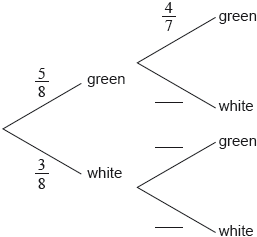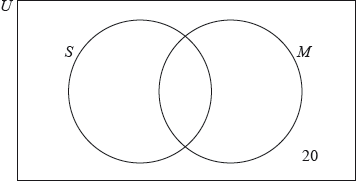| Date | May 2022 | Marks available | 8 | Reference code | 22M.2.SL.TZ1.5 |
| Level | Standard Level | Paper | Paper 2 | Time zone | Time zone 1 |
| Command term | Find | Question number | 5 | Adapted from | N/A |
Question
The aircraft for a particular flight has seats. The airline’s records show that historically for this flight only of the people who purchase a ticket arrive to board the flight. They assume this trend will continue and decide to sell extra tickets and hope that no more than passengers will arrive.
The number of passengers that arrive to board this flight is assumed to follow a binomial distribution with a probability of .
Each passenger pays for a ticket. If too many passengers arrive, then the airline will give in compensation to each passenger that cannot board.
The airline sells tickets for this flight. Find the probability that more than passengers arrive to board the flight.
Write down the expected number of passengers who will arrive to board the flight if tickets are sold.
Find the maximum number of tickets that could be sold if the expected number of passengers who arrive to board the flight must be less than or equal to .
Find, to the nearest integer, the expected increase or decrease in the money made by the airline if they decide to sell tickets rather than .
Markscheme
(let be the number of passengers who arrive)
OR (A1)
OR (M1)
A1
Note: Using the distribution , to work with the that do not arrive for the flight, here and throughout this question, is a valid approach.
[3 marks]
(M1)
A1
[2 marks]
(M1)
80 A1
[2 marks]
METHOD 1
EITHER
when selling tickets
top row A1A1
bottom row A1A1
Note: Award A1A1 for each row correct. Award A1 for one correct entry and A1 for the remaining entries correct.
(M1)A1
OR
income is (A1)
expected compensation is
(M1)A1A1
expected income when selling tickets is (M1)
A1
THEN
income for tickets (A1)
so expected gain A1
METHOD 2
for tickets sold, let be the compensation paid out
A1A1
(M1)A1A1
extra expected revenue (A1)(M1)
Note: Award A1 for the and M1 for the subtraction.
(to the nearest dollar) A1
METHOD 3
let be the change in income when selling tickets.
(A1)(A1)
Note: Award A1 for one error, however award A1A1 if there is no explicit mention that would result in and the other two are correct.
A1A1
(M1)A1A1
A1
[8 marks]
Examiners report
In part (a) Stronger candidates were able to recognize that they needed to use the binomial to find the probability. Some candidates confused binomialpdf and binomialcdf functions. Some did not understand that “more than 72” means “73 or 74” and how their GDC uses the lower boundary parameter.
In part (b) many candidates could find the expected number of passengers and the maximum number of tickets. This part was well attempted.
Part (c) was expected to challenge the strongest candidates and had little scaffolding. However, this may have been too much for this cohort and resulted in few marks being awarded. A variety of methods were used but few progressed beyond finding values of income minus compensation. Only a few candidates took probabilities into consideration.




